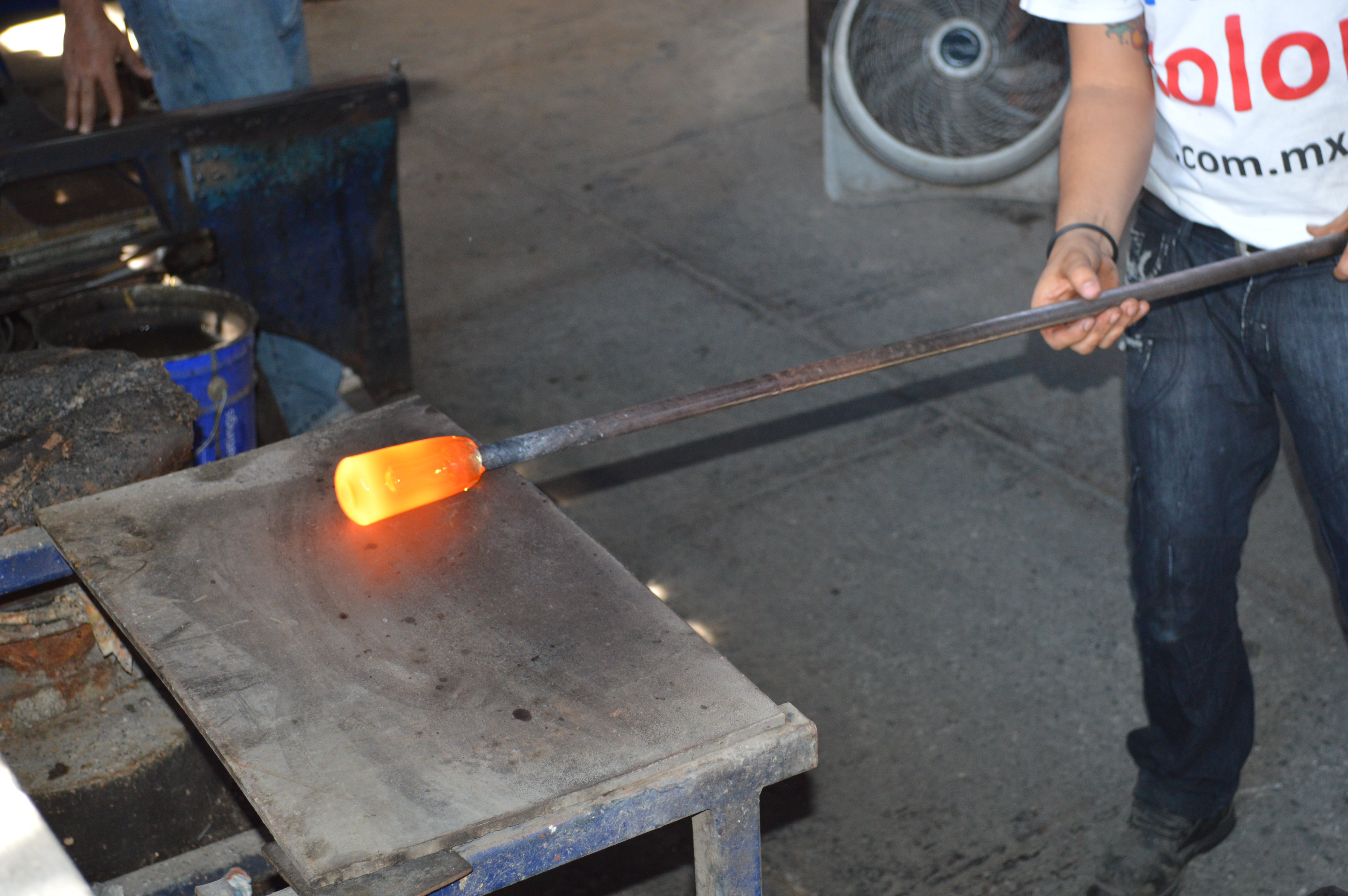Marver on:
[Wikipedia]
[Google]
[Amazon]
 A marver is a tool used in
A marver is a tool used in
glassblowing
Glassblowing is a glassforming technique that involves inflating molten glass into a bubble (or parison) with the aid of a Blowpipe (tool), blowpipe (or blow tube). A person who blows glass is called a ''glassblower'', ''glassmith'', or ''gaffer'' ...
. It generally is made of a polished steel
Steel is an alloy made up of iron with added carbon to improve its strength and fracture resistance compared to other forms of iron. Many other elements may be present or added. Stainless steels that are corrosion- and oxidation-resistant ty ...
, brass
Brass is an alloy of copper (Cu) and zinc (Zn), in proportions which can be varied to achieve different mechanical, electrical, and chemical properties. It is a substitutional alloy: atoms of the two constituents may replace each other with ...
, or graphite
Graphite () is a crystalline form of the element carbon. It consists of stacked layers of graphene. Graphite occurs naturally and is the most stable form of carbon under standard conditions. Synthetic and natural graphite are consumed on large ...
surface attached to a metal or wooden table. For fine applications such as lampworking
Lampworking is a type of glasswork in which a torch or lamp is used to melt the glass. Once in a molten state, the glass is formed by blowing and shaping with tools and hand movements. It is also known as flameworking or torchworking, as the moder ...
, a smaller hand-held implement may instead be used. As a tool, marvers date back to glassblowing techniques of the Roman Empire
The Roman Empire ( la, Imperium Romanum ; grc-gre, Βασιλεία τῶν Ῥωμαίων, Basileía tôn Rhōmaíōn) was the post-Republican period of ancient Rome. As a polity, it included large territorial holdings around the Mediterr ...
and were made of marble.
Warm glass is rolled on the marver, both to shape it and as a means of temperature control. With a high specific heat capacity
In thermodynamics, the specific heat capacity (symbol ) of a substance is the heat capacity of a sample of the substance divided by the mass of the sample, also sometimes referred to as massic heat capacity. Informally, it is the amount of heat t ...
, the surface absorbs heat from the glass; because of the relatively slow flow of heat through the glass, it does so particularly from the outermost material, forming a more viscous
The viscosity of a fluid is a measure of its resistance to deformation at a given rate. For liquids, it corresponds to the informal concept of "thickness": for example, syrup has a higher viscosity than water.
Viscosity quantifies the inter ...
skin.
Because the glass comes in direct contact with the marver, it must be kept exceptionally clean in order to prevent points of poor conduction or the transfer of debris into glass worked upon it. Metallic marvers are generally rubbed with steel wool
Steel wool, also known as iron wool, wire wool or wire sponge, is a bundle of very fine and flexible sharp-edged steel filaments. It was described as a new product in 1896.''Iron Age'', Vol. LVII, p.871, cited by ''Journal of the Iron and Steel ...
and then wiped with rubbing alcohol
Rubbing alcohol is either an isopropyl alcohol or an ethanol-based liquid, with isopropyl alcohol products being the most widely available. The comparable ''British Pharmacopoeia'' (''BP'') is surgical spirit. Rubbing alcohol is denatured and un ...
to prevent rust.
References
Glass art {{Glass-art-stub